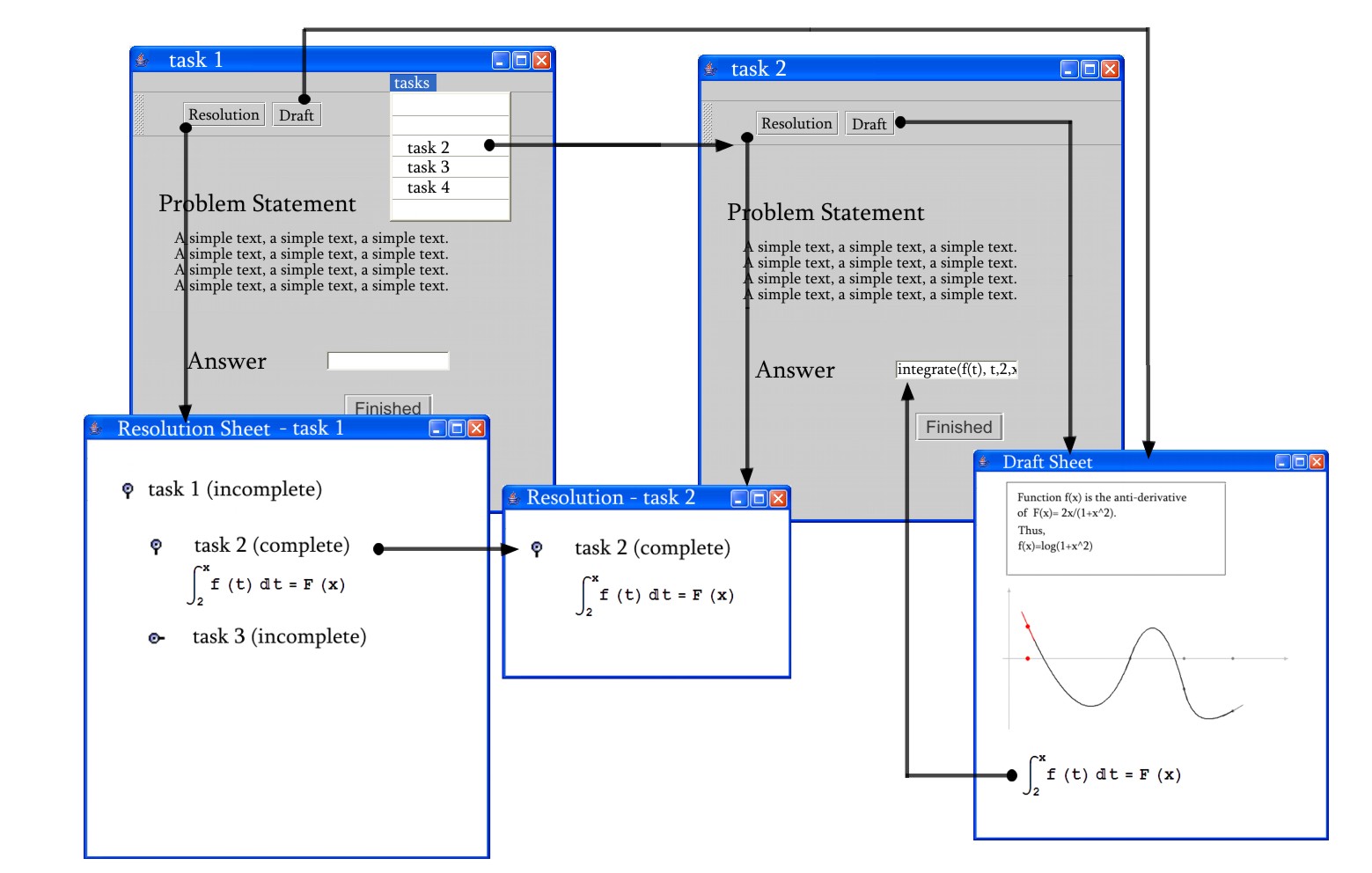Task Resolution Process
Solving a task may involve several steps (c.f. figure bellow).
Each step corresponds to the resolution of a subtask, which itself is a task.
At any stage of resolution, the next step may either be predefined in the task,
or else selected by the student, among available tasks.
Two additional important concepts are:
Resolution Sheet contains the sequence of intermediate answers
given by the student. More precisely, the resolution sheet is a
tree formed by the resolution sheets of all undertaken and completed subtasks.
Draft Sheet is used to write and draw marginal notes, or to perform
auxiliary calculations. The set of available input tools is determined by task
Context. All objects written by the student in the draft
sheet are terms of the task Context.
During the task resolution process, the system:
- manages the tree of all subtasks under execution;
- maintains coherence among states of all involved tasks;
- keeps track of the resolution sheet;
- provides a draft sheet (common to all subtasks).

We emphasize that CATS system is designed to cope with a very simple task
evaluation cycle, where the concept of task is actually much broader
(than what was sketched in the Concept Model):
- helping the user, or the system, to perform given actions like
choosing parameters, selecting a new task, compute something, is a task;
- the draft sheet and its tools are tasks that have system automated
answers;
- the act of creating new tasks, or contexts, is itself a task;
- a tutor agent that evaluates the student learning profile, helping
him to select the appropriate exercises, is a task (the student profile
being its input parameter; its Context
defining all needed Artificial Inteligence).
Home
